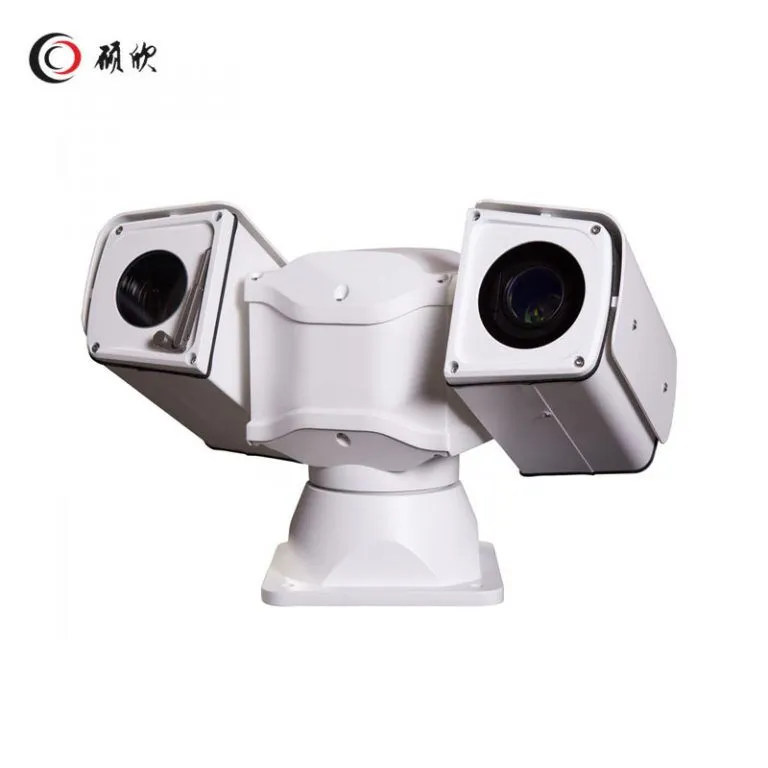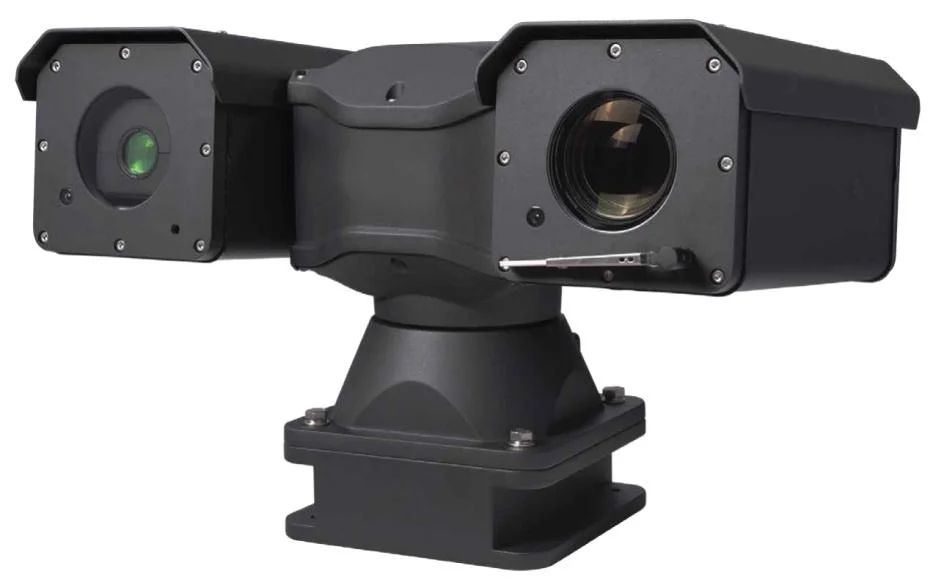Cities never sleep, and neither do the challenges of keeping them safe. From quiet mountain roads to buzzing highways, from isolated power substations to crowded urban junctions, every corner demands watchful eyes that don’t blink. Long-range PTZ cameras have become the silent partners of modern security teams, capturing distant details through fog, rain, and darkness—while following fast-moving targets with precision. Their presence can mean the difference between catching threats in time and missing them entirely.
Surveillance Needs in Police Operations, Power Infrastructure, and Roadways
Long-Range PTZ Cameras for Dynamic Surveillance Needs
Long-range PTZ cameras shine where fixed cameras can’t keep up, offering clear visuals, durability, and smooth tracking in open or mobile settings like highways, substations, and patrols. For police on the move, these cameras stay steady on vehicles and see far at night to handle fast-paced situations. Power companies rely on them to watch vast, remote sites, enduring dust, rain, and extreme weather while capturing sharp, distant images. On highways, they pivot quickly to follow speeding cars without missing a beat. Whatever the task, these cameras adapt to tough environments, delivering dependable performance every day. Check out Shuoxin’s site for more.
Choosing the Right PTZ Camera for Each Application
Picking the right PTZ camera means thinking about zoom, night vision, weather toughness, and how easily it connects with other systems. If one of these parts is weak, the whole setup struggles.
Zoom Capabilities and Focal Length Considerations

Optical zoom matters most when you must see faraway details. A camera with 33x zoom and 5.5~180mm focal length can scan large spaces, then zoom close on something small. The 500M Night Vision LASER Vehicle PTZ Camera does this well. It has a 2MP CMOS sensor plus 33x optical zoom. This is very useful for checking license plates during roadside stops or looking at the edge of a power plant fence without driving closer.
Many teams mention that once they got this level of zoom, they stopped wasting time sending people out for every small alarm trigger. They could just zoom in and confirm from base.
Night Vision Performance and Laser Illumination Distance
Darkness should not stop operations. This camera can carry a visible 2MP 250mm camera plus a laser that shines up to 1000 meters at night. In the day it can see up to about 2.5 kilometers. That matters when working where lights don’t exist, like remote substations or country roads. With this, patrols can see a person or car from nearly a kilometer away in total darkness.
One road safety team once shared how they caught a stolen truck moving on a pitch-black highway only because the camera’s laser lit the license plate at over 700 meters. That real use shows the difference night vision can make.
Environmental Protection Ratings (IP66/67, IK10)
Outdoor cameras need strong shells. If they fail in bad weather, everything else stops working. This camera handles -35°C to +55°C and meets IP66 for dust and water protection. Snow, coastal rain, or blowing sand will not stop it. That lets crews leave the units outside year-round without climbing up poles for repairs every few weeks.
There are still simple checks crews do, like cleaning the lens dome monthly, but the core parts are built to last.
Highway PTZ Camera with Network Positioning System
Highway and railway monitoring need very exact tracking. The Highway PTZ Camera with Network Positioning System gives this with GPS-based location plus high-speed motors. It comes as a complete set with camera, PTZ base, decoder, protective cover, wiper, heater, defogging glass, and a sunshade.
Its positioning system lets operators drop map coordinates right on the video screen. That’s a big help when managing many highway junctions. It also allows 256 preset points and 6 patrol tracks, so teams can set it to move on its own across checkpoints without needing someone to sit and steer it all day.
500M Night Vision LASER Vehicle PTZ Camera for Law Enforcement
This model is designed for mounting on moving vehicles such as police cars or inspection trucks. It uses shock absorbers to keep video steady on bumpy roads. It also has defrost and defog glass, which is surprisingly handy during early morning patrols when condensation builds up.
It offers laser night vision up to 800m. That means officers can watch unlit backroads without headlights giving away their position. The camera also works with license plate recognition systems using the ONVIF protocol, which is key during vehicle chases or highway checkpoints.
In one field test, officers mounted it on an SUV and could track a suspect car at 600 meters while driving at 80 km/h. The video stayed clear enough for plate reading despite the motion.
Strategic Mounting for Maximum Coverage
- Positioning: Mount cameras high to avoid obstructions like trees or vehicles. Ensure 360° pan rotation and -70° to +35° tilt for comprehensive coverage, capturing both nearby ground and distant horizons.
- Site-Specific Adjustments: For sloped roads or hilltop locations, slightly angle the camera upward to cover distant areas. Test coverage by walking the site with a stick to simulate a person, ensuring smooth tracking.
Power Supply and Network Connectivity
- Power Stability: Use a voltage stabilizer for AC24V/110V/220V or PoE setups to protect against power surges, especially in remote areas prone to lightning.
- Connectivity: Prioritize wired Ethernet for reliable connections. Use wireless only as a backup, ensuring clear line-of-sight to avoid signal disruptions from environmental factors like moving branches.
Advanced Configuration for Enhanced Surveillance
- Preset Points and Patrol Routes: Configure up to 256 preset points for key locations (e.g., gates, intersections) and set 6 patrol routes for automated scanning.
- Auto-Tracking: Enable auto-tracking to follow moving objects, such as vehicles crossing a defined line, ideal for highways or perimeters.
- Video Analytics: Activate features like intrusion detection, line-crossing alerts, abandoned object detection, scene change alerts, and fast motion detection to reduce false alarms and flag critical events instantly.
Integration with Centralized Systems
- ONVIF Compatibility: Supports ONVIF PROFILE S and PROFILE G, ensuring seamless integration with most Video Management Software (VMS) platforms, allowing mixed-brand setups.
- Centralized Monitoring: Connect multiple sites to a central control room for real-time monitoring. For example, a traffic center can monitor multiple highway junctions, zooming into incidents while maintaining oversight of other feeds.
Optimizing Performance in Harsh Outdoor Conditions
Outdoor setups face constant wind, sun, ice, and salty air. The cameras must survive for years without falling apart.
Weatherproof Housing and Anti-Corrosion Design Features
The shell is made from high-strength aluminum alloy. It resists rust near the sea and includes built-in wipers that clean rain or snow off the glass. With an IP66 rating, it blocks dust and stands up to heavy rain.
Some crews even apply a light anti-salt spray once a year when near ocean roads, just as extra care.
Thermal Management Systems for Extreme Temperatures
It works between -35°C and +55°C. Automatic heaters stop fog build-up in cold weather. Internal cooling fans keep electronics from overheating during hot summers. This keeps image quality stable across seasons without sudden blackouts or freezes.
Advantages of SHUOXIN PTZ Solutions in Field Deployments
SHUOXIN designs these cameras for tough field work. They are not only about high zoom or clear images but also about staying reliable outside.
Their PTZ units use high-speed pan-tilt motors that can move at up to 100°/s. They meet impact resistance of at least 4G, which is important when mounted on moving vehicles or on tall poles where wind shakes them. There is no delay or shake when following fast threats across large spaces.
Professional Services and Support from SHUOXIN
Hardware is only part of the job. SHUOXIN also gives project planning help. They assist in choosing the best models for your terrain and offer training for operators. They provide firmware updates, regular maintenance planning, and quick-response tech support after setup.
This makes a big difference for mobile patrols or fixed sites like substations, where downtime can mean safety risks.
FAQ
Q: Can I use Wi-Fi instead of Ethernet when setting up my outdoor PTZ camera?
A: It can work if there is clear line-of-sight between antennas. But Ethernet is more stable, especially in busy city areas or near factories where radio noise can break wireless links.
Q: How do I configure auto-tracking on my long-range PTZ camera?
A: Use your VMS or web client. Set motion zones and rules. When something crosses a line, the camera will follow it using its pan and tilt.
Q: What’s the best mounting height for optimal field coverage?
A: Usually 8–15 meters above ground works well. The key is to be above trees or poles while still keeping enough detail on the ground when zoomed in.


